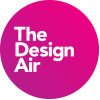Aviation is awash with blue. Approximately a decade ago, the skies were filled with blue liveries, interiors lined wall-to-wall with blue seats, carpets, and uniforms in every shade of navy. While design studios have gradually peeled airline brands away from such a strong design vertical, what caused such visual dominance in the industry?

Blue isn’t the only influential colour; red and white also feature heavily in airline brand palettes – although to lesser extents. These core industry colours actually have more to do with the origins of commercial aviation than design trends or simplistic aesthetical reasoning.
A matter of national pride

There is a good reason why legacy carriers feature these colours more than low-cost or metro carriers do. You only have to look at nation’s flags of many countries around the world to see a correlation between national colours and the airlines that represent them. For example, American Airlines, Air France, KLM, British Airways, Brussels Airlines, United, Delta all feature the colours of their national flags prominently in their liveries and brand image.

When airlines first took flight, many of them were controlled or heavily influenced by the governments of the countries they represented. They became international symbols during a time when passengers didn’t travel so freely. Ironically, many flags around the world feature red, white and blue, almost defeating the initial reason to paint aircraft in such patriotic colours.

When we look back at the very first liveries, and how they developed during the jet set era, the use of colour became more apparent. Polished metal airframes were quickly replaced by fully painted aircraft and as such the use of colour – and subsequently its dominance – increased.

While some airlines opted to use red as their core colour, for example Qantas, Turkish, JAL, Austrian, Swiss and previously Northwest; most other airlines opted for blue as the dominant colour. Fashion trends also dictated the use of colour in uniforms. Navy blue became prevalent, becoming commonplace in business attire and was more practical for the repetitive work cabin crew had to perform. Darker colours in cabin finishes also hid dirt and didn’t show up wear and tear so readily, so naturally as the brands of airlines emerged, navy and deep blue materials became a regular fixture.


Fast-forward to today and neutral trends have started to pull cabin design away from such a corporate use of blue. For example we’re seeing BA head towards darker slate and neutral colour tones, and American embrace grey colours in the cabins. Yet on the outside of the aircraft, legacy carriers still represent their countries with the same national symbolism, even when the brand image is refreshed.

Support the show
Help us make the show. By making a contribution, you will help us to make stories that matter and you enjoy.
Blue sky thinking
It’s not just legacy carriers though. The use of blue is compounded by the visual metaphor that travel conjures for many. Airlines naturally reflect their natural habitat, the sky, as well as far flung tropical destinations such as the azure seas of the South Pacific, Mediterranean or Caribbean. Because of this visual connection, many leisure airlines, such as Corsair, Air Tahiti Nui, Tui, Air Transat utilise this colour palette in their schemes.

In another regard, Brazilian-American entrepreneur David Neeleman, original founder and CEO of JetBlue, ended up stumbling on its name just a few weeks before the airline’s official launch. Yet since then, he’s launched both Azul (the Portuguese word for ‘Blue’) and Breeze Airways, both of which have sported the blue colour, Breeze the most recent featuring an entirely blue fuselage.
Got the blues
There’s also psychology behind the use of blue. Many research papers have shown how colour can produce an emotional reaction. While reds and yellow colours are associated with passionate and alerting reactions, greens and blues have the opposite effects. While green is the most calming, blue also elicits a neutralising effect while maintaining authority.

It’s one of the reasons that blue is used a lot in medical environments and on road signs to impart information, while red colours are used in emergency wards or on roads for important immediate notices, such as closure of lanes or speed warnings.

The colour blue also actually tends to lower heart rates, blood pressure, and even body temperature. Blue can also affect our sleep patterns, and it can slow breathing down as well. Studies of human memory also shows that memory is increased by the colour blue, which would mean that a blue logo is remembered easier than one of another colour.
The shift to neutrality

The past few decades have started to see airlines move away from national colours patterns. For example, in the Middle East alone, Etihad, Oman Air and Gulf Air have all shunned their respective nations colours, instead picking up on colour palettes resembling their geographical home.

Every single one of these brands have employed design studios to help reimagine their brands recently, and all feature a balanced, holistic approach to their brand image, with uniforms, interiors and liveries all uniquely different, representative of their home countries, without the slavish requirement to mirror their nations flags.

Aircraft interior suppliers have also drastically increased the ranges of texture, colour and treatment available to airlines over the past couple of decades, diminishing the ‘sea of blue seats’ that used to dominate airlines in the 90s and early 2000s. Meaning more option allows for greater creativity.

Much like Lego has seen an evolution of colour use over the past few decades, the airline industry will continue to evolve and shift away from such a dominance. However, we believe aviation will always feature blue in some major regard, as there are just too many logical associations with the colour, and yet so few reasons against its use.
Support the show
Help us make the show. By making a contribution, you will help us to make stories that matter and you enjoy.

